How Serious is Water Crisis in Iran?
Today, water is considered one of the fundamental keys of development, economic prosperity, and social well-being. Its shortage will create many limitations. Water shortages, directly and indirectly, affect many aspects of life, including the control of water storage and its supply, distribution types, transmission, productivity factor, planning, conservation management and more. In this regard, construction of large and small dams will be considered on rivers, along with related irrigation networks in different countries to take advantage of their water to meet the needs and objectives of the society, such as drinking, agriculture, industry and generating power (1).
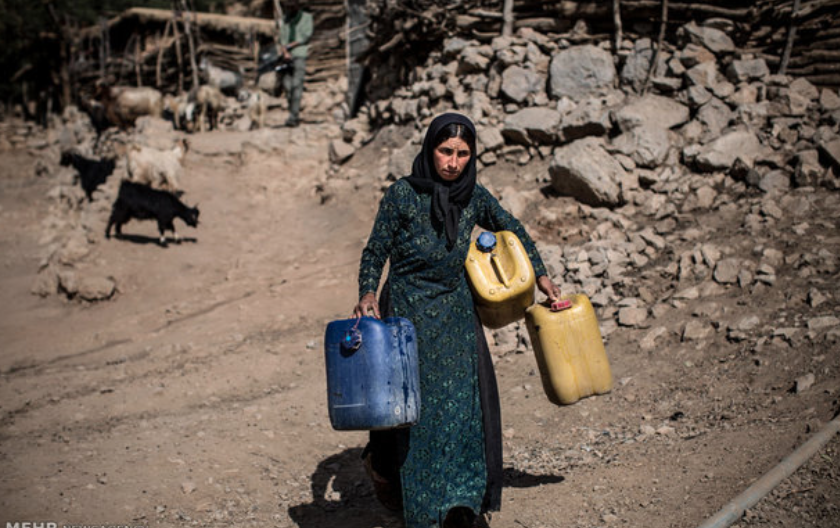
Water has been the key natural-resource during the three millennia of recorded history in the Middle East. Some regions of the world are drier, and others have higher populations or larger economies, but no other region of the world embraces such a large area, with so many people striving so hard for economic growth, with such little water. In the Middle East region, water is one of the most valuable and vulnerable natural resources. Water shortage and the increased demand associated with uncontrolled development, intensive agriculture, mass tourism, overpopulation and over-consumption results in a complexity of interrelated problems affecting social, economic and natural aspects of everyday life (2).
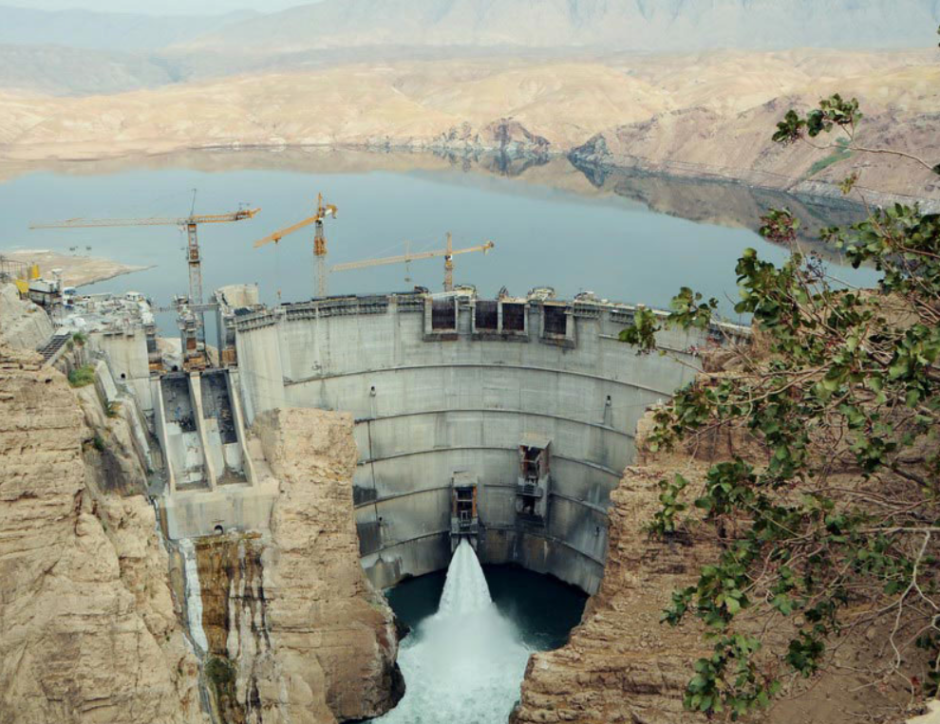
Indeed, water quality is rapidly deteriorating. Many countries in the region have difficulties in protecting their surface and groundwater resources, due to weak regulation and poor control on the discharges of untreated domestic and industrial wastewater, which is threatening the ecosystem and human health. In most countries of the region and particularly the arid ones, although problems around the resource’s availability are normally prominent, the issue of the quality of water is gaining recognition. It is already a major problem in the region (3). Furthermore, the greater fluctuation in resource availability associated with presumed climatic changes is causing concern, as many countries in the region experience increasingly severe flooding and droughts (4).
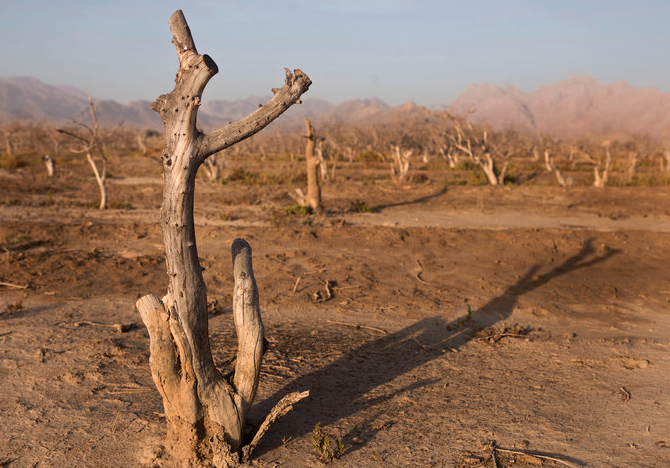
According to a detail analysis of water resources and its availability throughout the MENA region, we can come to the conclusion that the origin of water stress is not limited to the scarcity of the resource, but stems from three interacting crises: demand for freshwater in the region exceeds the naturally occurring, renewable supply; much of the region’s limited water is being polluted from growing volumes of human, industrial and agricultural wastes and thereby bringing the water quality deterioration to be a problem dominating the water crisis; and the same water is desired simultaneously by different sectors within some societies or wherever it flows across or under an international border.
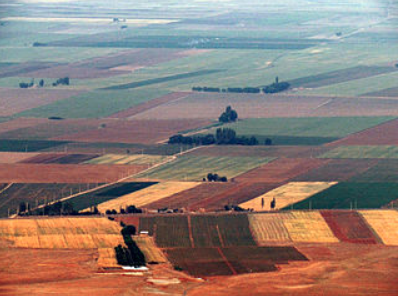
These three crises are interdependent and should not be considered separately. Therefore, any resolution must deal with all three, quantity, quality and equity, at the same time to achieve an appropriate solution that is economically efficient, ecologically sustainable, and politically acceptable. In addition to the three aforementioned interconnecting crises, several other issues are behind the emerging water crisis as described here below (2).
It is hard to imagine life without access to sufficient quantities of fresh water. But in some parts of the world, particularly the Middle East, that is becoming more than a theoretically disturbing possibility, as climate change, mass migration, environmental degradation, drought and political instability – among other issues – make the use and management of diminishing water resources an increasing challenge. It’s a particular concern in Iran, where a number of problems, including water depletion, is now receiving some serious attention. As Kaveh Madani, an environmental policy expert at London’s Imperial College, explains, there are three main reasons for Iran’s rapidly declining water resources, “one being the rapid population growth” (5). Various researchers, environmentalists, experts and lay people in the field of water issues have additionally been emphasizing the seriousness of water shortage in Iran for years (6, 7).
Recent analyses reveal that seven of the country’s 32 provinces are classified as experiencing “water shortage”, while 13 face a “critical water situation.” According to the same analyses, none of the provinces — including in the Caspian Sea region, which enjoys vast water resources — can be categorized as having sufficient water basins. As such, water management has become the top priority for the government (8). It is believed that what is referred to as Iran’s environmental crisis is actually a manmade crisis. The report says that the main cause of the current crisis is the indifference and inaction of the regime’s officials and incorrect exploitation of the country’s water resources. On the other hand, Iran’s outdated irrigation technique has caused the farmers and poor peasants to suffer the most from water scarcity (9).
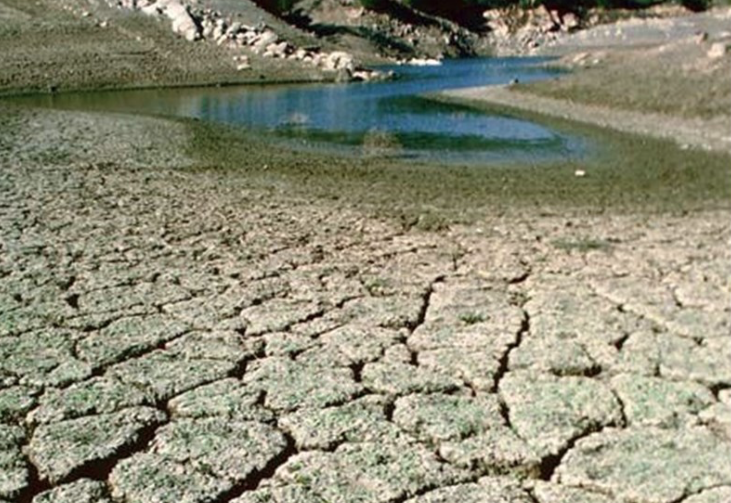
As stated by the United Nations, subsequent to the population growth, our planet’s second most challenging issue lies in the field of water crisis and management. Fresh water resources of the earth are so scarce, that from the 100% of water found on the earth, 97% is salt water and only 3% is fresh water. Of that fresh water, 70% is frozen in glaciers, 29.7% in groundwater and 0.3% in rivers and other inland water bodies. Freshwater resources are also unevenly distributed and allocated to human populations. Unfortunately, the share of this country from the total fresh water resources is further limited due to the hot and arid climate. The water issue is quite complicated as the total volume is constant, while it is found in different forms (10).
Iran has a mean annual precipitation (MAP) of only about 250 mm, which is about one third of the global average. Nearly 70% of this slight precipitation is being lost due to evaporation. About 65% of the country is considered as arid and 20% is semi-arid. Also, water resources distribution in the country and temporal distribution of precipitation during the year is heterogeneous and uneven (11). Water scarcity in Iran is combined with inefficient water use where domestic use of water is 70% higher than the global average. Water shortage in Iran has been considered as one of the limiting factors for sustainable development. It is predicted that Iran is among the countries which will face an absolute water scarcity by 2025. Regarding the water shortage in the Middle East and principal role of water in agriculture, industry and people’s lives, the countries in which there is not a balance between the water supply and its demand will face political, as well as social, problems. This problem is more serious in the Middle East, which has a history of water-based political conflicts, and scientists have warned about intense water scarcity and desertification in future. Even per capita water availability will fall by 50 percent by 2050. Therefore, study aimed to investigate the water crisis, its intensity and causes in Iran is needed to propose some exit strategies in order to confront or to mitigate its effects (12).
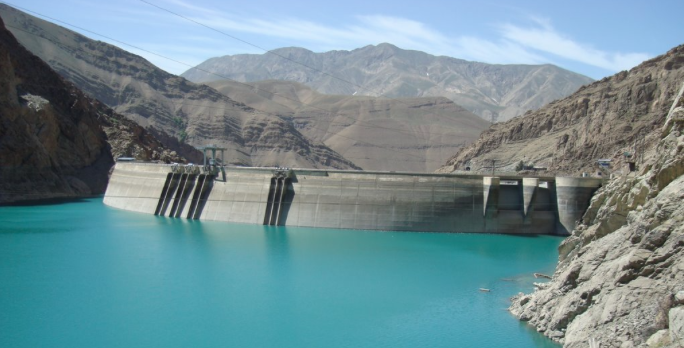
The annual precipitation is 413 billion cubic meters (bcm), but it varies greatly across the country, ranging from less than 50 mm in central Iran to about 1,000 mm in the Caspian coast. Average precipitation is about 250 mm per year, less than one-third of the average annual precipitation at the global level. Most of the country receives less than 100 mm of precipitation per year, and 75 % of the country’s precipitation falls over only 25 % of the country’s area. Also, 75 % of the precipitation is off- season, i.e., falls when not needed by the agricultural sector. Winter is the season with the heaviest precipitation and only a few parts of the country (Caspian Sea coast, northwest, and southeast) receive rainfall in summer. The considerable spatial and temporal precipitation variability in Iran has been the main motivation to construct numerous dams and large reservoirs to regulate water flows. There are several large rivers throughout the country. Only one river is navigable, and the others are too steep and irregular. Streams are seasonal and variable. They normally flood in spring (with the ability to create some damage), but have little or no water in summer. The total renewable freshwater of the country and the total recycled water from consumption are respectively estimated at 130 and 29 bcm annually. The annual renewable water per capita in Iran is estimated to be less than 1,700 m3, well below the global level 7,000 m3 and slightly above the Middle-East and North Africa MENA level 1,300 m3 (13).
While the mean annual precipitation (MAP) of the planet Earth is 860 mm, it is only about 240 mm in Iran, which comprises 1.1% of the continental areas. MAP ranges from 2000 mm near the Talesh City in the north to less than 51 mm in the Central Desert. The rainy period in most of the country is from November to May. There is no rain in most of the country between May and October. About 90% of the total precipitation occurs in cold and humid seasons and in northern and western parts of the country, and only 10% occurs in warm and dry seasons and in central, southern and eastern parts. About 52% of precipitation occurs in 25% of the area of the country; hence, some parts of the land suffer from a lack of water resources, and an imminent water crisis in the near future is a certainty. Groundwater supplies cover about 60% of the national consumption in years with “normal” precipitation, and undoubtedly a larger percentage during prolonged drought, as the one we are experiencing now. Occurrence of recurrent and prolonged droughts and torrential rains in many localities of Iran is a rule rather than exception; flash floods are the natural consequence of such events. This natural setting forced our pragmatic ancestors to invent the qanat, water resource management par excellence. For us, Iran is the land of droughts, floods, and Qantas (14).
Due to high evaporation of surface water, Iranians have, for centuries, used traditional methods of water transport and access to supply their freshwater resources. More than 2000 years old, the Qanat is still used in Iran today and is designed to access and transfer groundwater without the use of lifting devices. Wells are sunk every 20 to 50 meters along the system, with a tunnel then built to link the wells on a slope from higher ground. Groundwater flows naturally down the tunnel till it reaches a surface point at the end, either in a town or city, or by creating an artificial desert oasis (15).
Iran’s fresh water supplies are now under unsustainable strains. Ninety percent of the country is arid or semi-arid, and an estimated two-thirds of its rainfall evaporates before it can replenish rivers. As a result, Iran provides more than half of its water needs by drawing from underground aquifers, but public usage is rapidly draining the subterranean reservoirs. At current rates of overuse, twelve of Iran’s thirty-one provinces will exhaust their groundwater reserves within the next 50 years. Iran’s water problems now risk undermining the national economy. The agricultural sector produces 10 percent of Iran’s GDP and employs a quarter of the labor force. It also supports national food security, a top priority since the 1979 revolution was carried out in the name of “the oppressed.” Indeed, Tehran subsidizes producers and consumers alike in a dual strategy to promote self-sufficiency in staple crops by bolstering both supply and demand. Yet Iran’s food security is now imperiled because agriculture accounts for more than 92 percent of the country’s water use, but only produces about 66 percent of the food supplies for its 79 million people. Tehran has to import the rest. The intensifying “water stress” threatens to further sap agricultural output, increase import bills and aggravate fiscal burdens. Agricultural demands are even subverting food security. Some areas, such as the central Kashan plain, have been rendered unfit for farming because of soil salinity, as groundwater overdrafts sink water tables (16).
Iran’s fresh water supplies are now under unsustainable strains. Ninety percent of the country is arid or semi-arid, and an estimated two-thirds of its rainfall evaporates before it can replenish rivers. As a result, Iran provides more than half of its water needs by drawing from underground aquifers, but public usage is rapidly draining the subterranean reservoirs. At current rates of overuse, twelve of Iran’s thirty-one provinces will exhaust their groundwater reserves within the next 50 years. Iran’s water problems now risk undermining the national economy. The agricultural sector produces 10 percent of Iran’s GDP and employs a quarter of the labor force. It also supports national food security, a top priority since the 1979 revolution was carried out in the name of “the oppressed.” Indeed, Tehran subsidizes producers and consumers alike in a dual strategy to promote self-sufficiency in staple crops by bolstering both supply and demand. Yet Iran’s food security is now imperiled because agriculture accounts for more than 92 percent of the country’s water use, but only produces about 66 percent of the food supplies for its 79 million people. Tehran has to import the rest. The intensifying “water stress” threatens to further sap agricultural output, increase import bills and aggravate fiscal burdens. Agricultural demands are even subverting food security. Some areas, such as the central Kashan plain, have been rendered unfit for farming because of soil salinity, as groundwater overdrafts sink water tables (16).
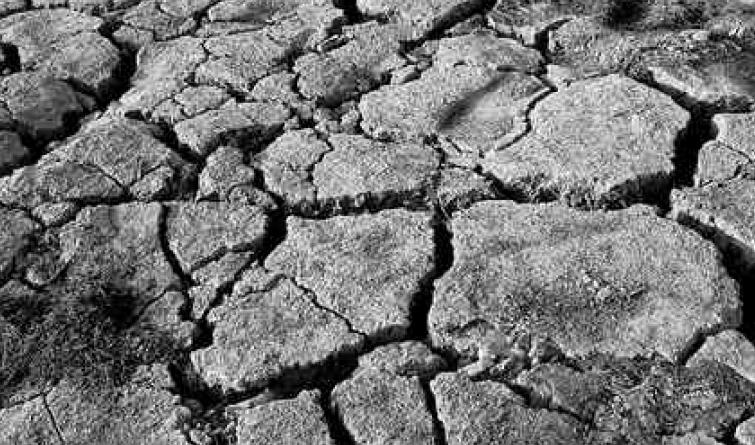
With above introduction in mind, experts are pointing out various factors for the foreseeable water crisis in Iran (7). Many of them are placing emphasis on the lack of foresight and mismanagement of the country’s political decision makers and water managers (7, 10,15,16, 21, 30). Some are emphasizing the ratios of demand and supply (2, 7, 10,15,16, 30). The same authors are describing other factors, such as increase in population, drought, and climate change, et (17). A lengthy list of factors, all of which are contributing factors for water crisis in Iran (18, 20).
Iran has had a long history of effective and sustainable water resource management under arid and semi-arid conditions. However, today the country is faced with serious challenges in the water sector, including rising water demand and shortages, declining groundwater levels, deteriorating water quality, and increasing threats to the environment and various ecosystems. If these issues persist, tragedy will be the inevitable result. Over the last three decades, tremendous efforts have been made to supply water, primarily an extensive program of development with dam building at the forefront (22). However, the process of such massive dam construction was given to IRGC, which have been performed without fundamental consideration toward the environment and ecosystems’ welfare. IRGC is a core part of Iran’s oppression, exporting of terrorism and a major stakeholder of its economic activities apparatus (19, 23).
Analyses of the Iranian security threat often miss a central piece of the puzzle: Iran’s government, like many other corrupt, ideologically twisted regimes in the developing world, is not very good at many of the basic tasks of governing. The mullahs and their allies have built an unsustainable system that can only survive from year to year by depleting the country’s natural resources and destroying the physical basis of national life. Tehran’s quest for regional hegemony isn’t just driven by abstract ambition, historical nostalgia, and religious zeal. It’s also driven by the realization that Iran must expand in order to acquire the resources it needs to stay afloat (24).
For this reason, Iran’s transition to being a “normal” country and peaceful member of the international system will be much more difficult than many realize. As the sweeping mismanagement that led to the water crisis illustrates, the political and economic structures that grew up under the revolution are both massively dysfunctional and deeply engrained in absolute corruption (24, 25, 26, 27). Just like in Cuba, Venezuela, and the Soviet Union, the rigid application of an unworkable ideology has deformed Iran’s institutions and led to decades of terrible investments and unsustainable policies (24). Many environmentally disadvantageous decisions, like Soviet leaders, have been taken, which have severely degraded Iran’s natural ecosystems, such as elimination of water flow to lake Urumia (28).
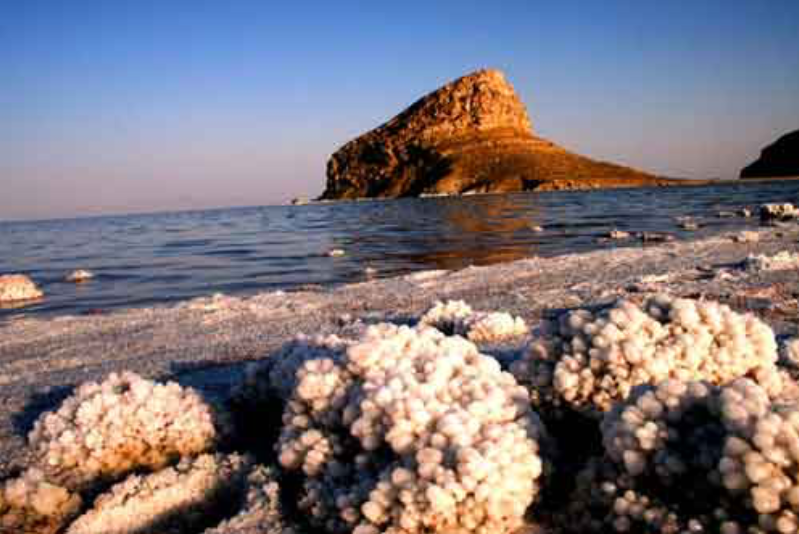
The environmental crisis is telling for another reason: it shows that the drive for nuclear weapons is more integral to Iran’s policy than many understand. To persist in making huge financial investments in nuclear development, both at the cost of international sanctions and in the face of a countryside that is drying up, indicates a very high degree of determination and commitment (24).
The above historical analysis of water-related challenges in Iran reveals that there has been a rapid but perhaps ill-conceived development in the country which was accelerated by the White revolution, the Islamic revolution and the post-war situation. Iran’s development plans have mostly focused on economic development, self-sufficiency and self-reliance regardless of the environment’s boundary conditions and the potential long-term environmental costs (29).
Conclusion:
After careful review of above discussed literatures, one could arrive at the conclusion that Iran’s water crisis is indeed government made or in exact terms, a man-made disaster. After the revolution in 1979, the Islamic government had worked in many fronts against the conventional wisdom of governance. Government authorities in every level advocated for having more children, producing more grain and meat to become food self-sufficient without having any knowledge of farming processes, draining the country of educated and intellectual people and forcing them into exile, absorbing the most opportunistic and no well-educated layer of society added to the government’s circle. The seeds that the fundamentalist totalitarian Islamic government sewed, it now is harvesting.
There are all kinds of environmental laws in Iran’s constitution. The government authorities have very convincing files, folders, projects, excuses and answers to international organizations in response to a lack of actions regarding violations of their obligations. They even could name thousands of cooperatives and NGOs in less than an hour’s time who are responsible for environmental issues, however, practically nothing has been accomplished in four decades. The world should have learned from the deceiving behavior of Iran’s atomic activities not to believe their empty gestures. The environmental issues are their least concern. I would suggest that all international entities concerned with environmental issues should cooperate with groups of concerned people or organizations not connected with the Iranian government.
Iran has been located at the existing geographical gradients for millennia and Iranians have adapted themselves well with this environment. They have invented the most ingenious hydraulic invention “Qanats” to bring groundwater from long distances to population centers without consuming any sources of energies. They were well aware of the climatic conditions of arid and semi-arid areas and water evaporation. Therefore, they chose underground water ways. They collectively cared and maintained for these valuable water resources, which were in communal ownership. However, in the last half of the 20th century and with the introduction of the motor pump as a cool and modern luxury along with subsidized energy, people started to extract the valuable underground water resources even more. There were no meters then or now to know how many cubic meters of water have been extracted. There are reports of many empty villages, dried out Qanats and even some deep wells. There is no accurate data in existence to show how deep groundwater level has fallen.
Along with these, one witnesses sudden rainfalls and flooding due to a lack of vegetative ground covers, improper watershed management, metrological forecasts and plans for distributing flood water in the fields, catchments or reservoirs and prevention of its destructive force to wipe villages, towns, people’s livelihoods, and even parts of cities. Allocating funds, trained personnel and proper machineries will distribute massive amounts of flood water, which slowly will infiltrate into ground and replenishes groundwater table.
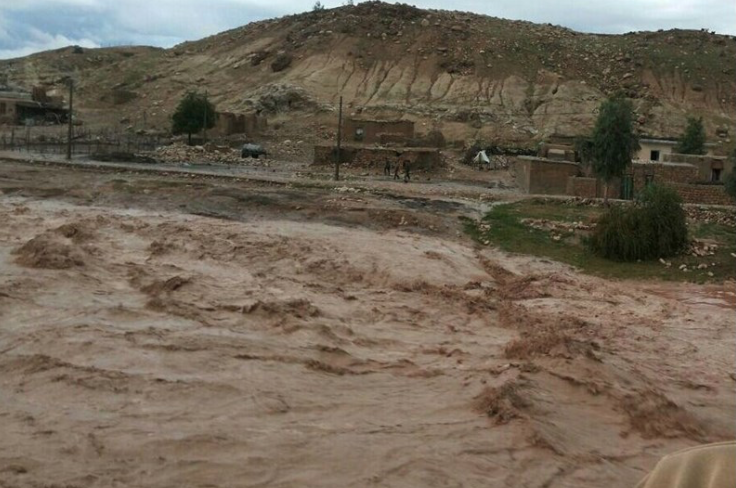
Construction of large dams couldn’t be entirely rejected. However, this craziness of dam building by the IRGC in Iran must completely stop. Construction of a dam requires fundamental research in all aspects of social, environmental, geological, seismological, biological and more of an ecosystem. Additionally, its cost and benefits must be reviewed in great detail. Another serious issue that must be resolved prior to construction is the matter of soil conservation practices and watershed management upstream and downstream. All questions must answered and arguments expressed to the satisfaction of experts and the public. If the argument is for generating hydro-power, then it must be completely rejected in case of Iran. The reason would be the availability of other less costly resources, such as sun, wind, geothermal and fossil.
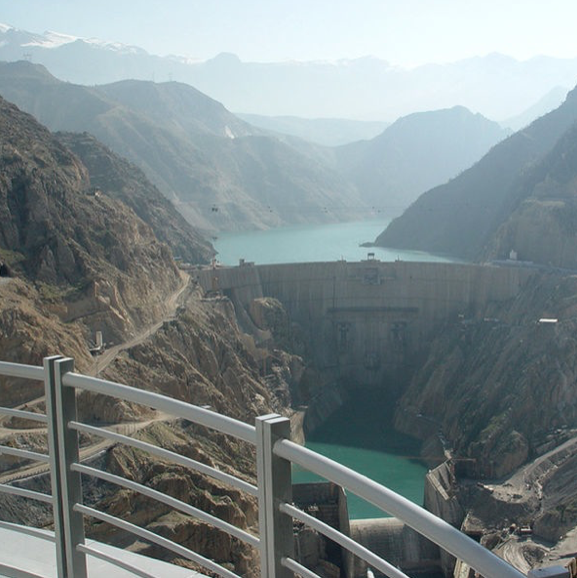
Well, if one attempts to sum up the Islamic government’s efforts toward environment, soil conservation, watershed management, erosion control, preservation of forests, management of rangelands, water resources management and Iran’s natural ecosystem, one must only say “disastrous”.
References:
Mohammad Heydari et al, 2013. A review of the Environmental Impact of Large Dams in Iran. International Journal of Advancements Civil Structural and Environmental Engineering – IJACSE Volume 1 : Issue 1
Hamdy A., Trisorio-Liuzzi G. Water scarcity management towards food security in the Middle-east region. In : Hamdy A. (ed.), Monti R. (ed.). Food security under water scarcity in the Middle East: Problems and solutions. Bari : CIHEAM, 2005. p. 15-28 (Options Méditerranéennes : Série A. Séminaires Méditerranéens; n. 65)
http://inweh.unu.edu/wp- content/uploads/2016/08/Water- Reuse-in-Arid-Zones.pdf
M. J. Amiri and S. S. Eslamian, 2010. Investigation of Climate Change in Iran. Journal of Environmental Science and Technology, 3(4): 208-216.
http://www.aljazeera.com/ programmes/peopleandpower/ 2016/11/iran-water-crisis- 161109114752047.html
Kaveh Madani Larijani, 2005. Iran’s Water Crisis; Inducers, Challenges and Counter-measures. ERSA 45Th Congress of European Regional Science Association, Verije University, Amsterdam, Netherlands.
Ehsan Nabavi, 2016. Iran’s environmental crisis/ why we should be mindful of depicting a dystopian future – STEPS Centre, Centre for European Studies, School of Politics and International Relations, Australian National University.
http://www.al-monitor.com/ pulse/originals/2015/05/iran- water-crisis.html
http://ncr-iran.org/en/news/ society/22054-iran-s-water- crisis-and-expansion-of-the- country-s-uninhabitable-areas
Abolfazl Fani, Iran Ghazi, Arash Malekian، 2016. Challenges of Water Resource Management in Iran. American Journal of Environmental Engineering، 6(4): 123-128.
http://www.fao.org/ag/agp/ agpc/doc/counprof/iran/iran. htm
Jamil Zargan1* and Seyed Mohammad Waez-Mousavi,2016. Water Crisis in Iran: Its Intensity, Causes and Confronting Strategies. Indian Journal of Science and Technology, Vol 9(44).
Kaveh Madani, 2014. Water Management in Iran: What is causing looming Crisis? J Environ Stud Sci. DOI 10.1007/s13412-014-0182-z.
Mehrdad Rahnemaei, Fardin Boustani, and Sayyed Ahang Kowsar, 2013. Achieving Ground Water Sustainability in Iran through Qanat Rejuvenation. Hydrol Current Res, 4:1.
Sinéad Lehane, 2014. The Iranian Water Crisis. Future Direction International.
http://iranprimer.usip.org/ blog/2013/oct/28/iran’s- environment-greater-threat- foreign-foes
Dr H.Motiee, GH. Manouchehri, Dr M.R.M. Tabatabai,2002. WATER CRISIS IN IRAN: CODIFICATION AND STRATEGIES IN URBAN WATER.
https://www.equaltimes.org/ has-iran-mismanaged-its-way- into-a#.WO3TllKZNfQ
http://www.trackpersia.com/ irgc-arm-oppression-terrorism/
http://www.tehrantimes.com/ news/301198/Water-crisis-in- Iran-A-desperate-call-for- action
http://www.thenational.ae/ world/middle-east/irans- rivers-run-dry-amid-drought- and-mismanagement
Farhad Yazdandoost, 2016. Dams, Drought and Water Shortage in Today’s Iran. Journal Iranian Studies, Vol. 49, 6: 1017-1028.
http://www.thetower.org/ article/the-slow-destruction- of-irans-water-supply/
https://www.the-american- interest.com/2015/03/23/irans- environmental-crisis/
http://ncr-iran.org/en/ncri- statements/human-rights/21383- mullahs-regime-is-the-source- of-moral-and-financial- corruption-in-iran
http://www. worldaffairsjournal.org/ article/tensions-tehran-iran’ s-mullahs-vs-revolutionary- guards
http://www.frontpagemag.com/ fpm/261993/mullahs-execute- every-man-entire-village-dr- majid-rafizadeh
AghaKouchak, A., et al., Aral Sea syndrome desiccates Lake Urmia: Call for action, J. Great Lakes Res. (2014), http:// dx.doi.org/10.1016/j.jglr. 2014.12.007
S. Mehryar, R. Sliuzas, A. Sharifi & M. F. A. M. van Maarseveen, 2015.The water crisis and socio-ecological development profile of Rafsanjan Township, Iran. WIT Transactions on Ecology and The Environment, Vol 199, © 2015 WIT Press.
London Middle East Institute, Water Crisis in Iran. April-May 2016, The Middle East in London.
Mohammad Heydari et al, 2013. A review of the Environmental Impact of Large Dams in Iran. International Journal of Advancements Civil Structural and Environmental Engineering – IJACSE Volume 1 : Issue 1
Hamdy A., Trisorio-Liuzzi G. Water scarcity management towards food security in the Middle-east region. In : Hamdy A. (ed.), Monti R. (ed.). Food security under water scarcity in the Middle East: Problems and solutions. Bari : CIHEAM, 2005. p. 15-28 (Options Méditerranéennes : Série A. Séminaires Méditerranéens; n. 65)
http://inweh.unu.edu/wp- content/uploads/2016/08/Water- Reuse-in-Arid-Zones.pdf
M. J. Amiri and S. S. Eslamian, 2010. Investigation of Climate Change in Iran. Journal of Environmental Science and Technology, 3(4): 208-216.
http://www.aljazeera.com/ programmes/peopleandpower/ 2016/11/iran-water-crisis- 161109114752047.html
Kaveh Madani Larijani, 2005. Iran’s Water Crisis; Inducers, Challenges and Counter-measures. ERSA 45Th Congress of European Regional Science Association, Verije University, Amsterdam, Netherlands.
Ehsan Nabavi, 2016. Iran’s environmental crisis/ why we should be mindful of depicting a dystopian future – STEPS Centre, Centre for European Studies, School of Politics and International Relations, Australian National University.
http://www.al-monitor.com/ pulse/originals/2015/05/iran- water-crisis.html
http://ncr-iran.org/en/news/ society/22054-iran-s-water- crisis-and-expansion-of-the- country-s-uninhabitable-areas
Abolfazl Fani, Iran Ghazi, Arash Malekian، 2016. Challenges of Water Resource Management in Iran. American Journal of Environmental Engineering، 6(4): 123-128.
http://www.fao.org/ag/agp/ agpc/doc/counprof/iran/iran. htm
Jamil Zargan1* and Seyed Mohammad Waez-Mousavi,2016. Water Crisis in Iran: Its Intensity, Causes and Confronting Strategies. Indian Journal of Science and Technology, Vol 9(44).
Kaveh Madani, 2014. Water Management in Iran: What is causing looming Crisis? J Environ Stud Sci. DOI 10.1007/s13412-014-0182-z.
Mehrdad Rahnemaei, Fardin Boustani, and Sayyed Ahang Kowsar, 2013. Achieving Ground Water Sustainability in Iran through Qanat Rejuvenation. Hydrol Current Res, 4:1.
Sinéad Lehane, 2014. The Iranian Water Crisis. Future Direction International.
http://iranprimer.usip.org/ blog/2013/oct/28/iran’s- environment-greater-threat- foreign-foes
Dr H.Motiee, GH. Manouchehri, Dr M.R.M. Tabatabai,2002. WATER CRISIS IN IRAN: CODIFICATION AND STRATEGIES IN URBAN WATER.
https://www.equaltimes.org/ has-iran-mismanaged-its-way- into-a#.WO3TllKZNfQ
http://www.trackpersia.com/ irgc-arm-oppression-terrorism/
http://www.tehrantimes.com/ news/301198/Water-crisis-in- Iran-A-desperate-call-for- action
http://www.thenational.ae/ world/middle-east/irans- rivers-run-dry-amid-drought- and-mismanagement
Farhad Yazdandoost, 2016. Dams, Drought and Water Shortage in Today’s Iran. Journal Iranian Studies, Vol. 49, 6: 1017-1028.
http://www.thetower.org/ article/the-slow-destruction- of-irans-water-supply/
https://www.the-american- interest.com/2015/03/23/irans- environmental-crisis/
http://ncr-iran.org/en/ncri- statements/human-rights/21383- mullahs-regime-is-the-source- of-moral-and-financial- corruption-in-iran
http://www. worldaffairsjournal.org/ article/tensions-tehran-iran’ s-mullahs-vs-revolutionary- guards
http://www.frontpagemag.com/ fpm/261993/mullahs-execute- every-man-entire-village-dr- majid-rafizadeh
AghaKouchak, A., et al., Aral Sea syndrome desiccates Lake Urmia: Call for action, J. Great Lakes Res. (2014), http:// dx.doi.org/10.1016/j.jglr. 2014.12.007
S. Mehryar, R. Sliuzas, A. Sharifi & M. F. A. M. van Maarseveen, 2015.The water crisis and socio-ecological development profile of Rafsanjan Township, Iran. WIT Transactions on Ecology and The Environment, Vol 199, © 2015 WIT Press.
London Middle East Institute, Water Crisis in Iran. April-May 2016, The Middle East in London.



